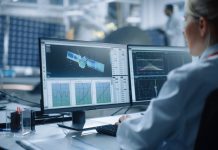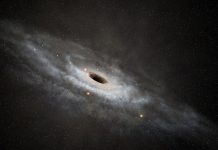A recent study reviews the major photonics breakthroughs of 2024, focusing on a team’s pioneering work to couple free electrons with nonlinear optical states in integrated microresonators, unlocking new potential for advanced electron control and imaging
An international research team has published a comprehensive review in the IEEE Photonics Journal summarising key photonics breakthroughs of 2024, with a spotlight on their pioneering work in coupling free electrons with nonlinear optical states within integrated photonic microresonators.
The study, led by Dr Yujia Yang and Prof. Tobias J. Kippenberg of the Swiss Federal Institute of Technology Lausanne (EPFL) and Prof. Claus Ropers of the Max Planck Institute for Multidisciplinary Sciences, highlights a new frontier in manipulating light and matter at the nanoscale.
Bridging free electrons and nonlinear optics
The study addresses the intersection of two rapidly advancing fields: the manipulation of free electrons in electron microscopy and the use of nonlinear optical dynamics in chip-integrated photonics. Nonlinear optical effects—where the material’s response to light is dependent on the light’s intensity—are crucial for advanced applications like optical frequency combs, or microcombs, which generate a spectrum of equidistant light lines from a single laser source. Meanwhile, the control of free electrons with light is propelling advancements in electron microscopy, spectroscopy, and particle acceleration.
While high-quality factor (Q) photonic microresonators have previously been used to mediate electron-photon interactions, most efforts have only explored the linear cavity response. The new review article, published online on September 2, 2025, focuses on going beyond this, detailing the team’s breakthrough work that leverages the rich nonlinear optical dynamics of these microresonators.
“We coupled free-electron beams in a transmission electron microscope with diverse spatiotemporal optical waveforms associated with coherent or incoherent microcombs synthesised by optical parametric oscillations,” explained Dr. Yang. The team successfully demonstrated ultrafast electron-beam modulation by chip-based femtosecond temporal solitons (a type of stable light pulse within the microresonator).
Future quantum and microscopy applications
This successful coupling opens up significant new avenues for both research and application. Prof. Kippenberg noted that the rich nonlinear optical dynamics “present an intriguing opportunity for controlling free electrons with nonlinear optics and probing nonlinear optics with electron beams.”
The researchers also summarised other highly promising advancements made in 2024, including attosecond electron microscopy, probing polariton wavepackets, and the generation of chiral electron coils.
Prof. Ropers emphasised the broader impact, concluding that these and future developments will “foster novel research and applications in advanced electron control and measurement schemes for electron imaging and spectroscopy, free-electron light sources, laser-based particle accelerators, and ultrafast quantum optics.” This convergence of nonlinear photonics and electron-matter interaction signifies a major leap in modern scientific instrumentation and fundamental physics research.











